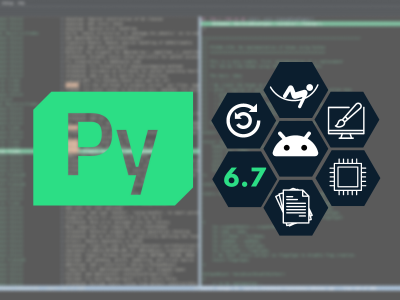Boot to Qt on embedded HW using Android 7.0 and Qt 5.8
February 17, 2017 by Otto Ryynänen | Comments
One can have real pain trying to create a demo setup or proof-of-concept for an embedded device. To ease the pain Qt for Device Creation has a list of supported devices where you can flash a “Boot to Qt” image and get your software running on the target HW literally within minutes.
Background
Back in 2014 we introduced a way to make an Android device boot to Qt without the need of a custom OS build. Android has been ported to several devices and the Android injection method made it possible to get all the benefits of native Qt applications on an embedded device with the adaptation already provided by Android.
The Android injection was introduced using Qt versions 5.3.1. whereas the supported Android versions were 4.2 and 4.4. It is not in our best interest that anyone would be forced to use older version of Qt, nor does it help if the Android version we support does not support the hardware that the developers are planning to use. I have good news as the situation has now changed.
Late last year we realized that there still is demand for Android injection on embedded devices so we checked what it takes to bring the support up to date. The target was to use Qt 5.8 to build Boot to Qt demo application and run it on a device that runs Android 7.0. The device of choice was Nexus 6 smartphone which was one of the supported devices for Android Open Source Project version 7.0.0.
The process
We first took the Android 7.0 toolchain and updated the Qt 5.4 Boot to Qt Android injection source code to match the updated APIs of Android 7.0. Once we could build Qt 5.4 with the toolchain, it was time to patch the changes all the way to Qt 5.8.
Since Qt version 5.4 there has been improved modularity in Qt and it became apparent during the process, e.g. the old Surfaceflinger integration was replaced with a platform plugin.
The results can be seen in the videos below.
https://youtu.be/yl2CaWXQAEw
https://youtu.be/Fh_O51fgdGw
The Boot to Qt Android injection is an excellent way to speed up the development and get your software to run on target hardware as early as possible. If you want to know more about the Boot to Qt and Android injection, don’t hesitate to contact us.
Blog Topics:
Comments
Subscribe to our newsletter
Subscribe Newsletter
Try Qt 6.7 Now!
Download the latest release here: www.qt.io/download.
Qt 6.7 focuses on the expansion of supported platforms and industry standards. This makes code written with Qt more sustainable and brings more value in Qt as a long-term investment.
We're Hiring
Check out all our open positions here and follow us on Instagram to see what it's like to be #QtPeople.



